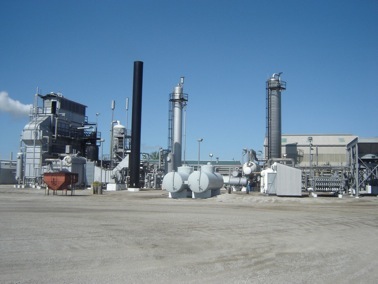To get the elements needed to make anhydrous ammonia (chemical name NH₃) three things are required: natural gas, steam, and air. The hydrogen comes from two sources, natural gas (methane CH₄) and steam (H₂O). The nitrogen is pulled from the air.
By passing the natural gas and steam through a two-stage reformer, at 1300º-1700º F and 300 PSI, the elemental components are separated then injected with air to achieve the required amount of nitrogen. The carbon and oxygen, thru a series of catalyst beds, are combined to form CO₂ which is then stripped out of the process gas stream. The resulting gas stream is then passed through four catalyst “bottles”, at 4000-4600 PSI and 930º F, to combine the nitrogen and hydrogen to form anhydrous ammonia.




